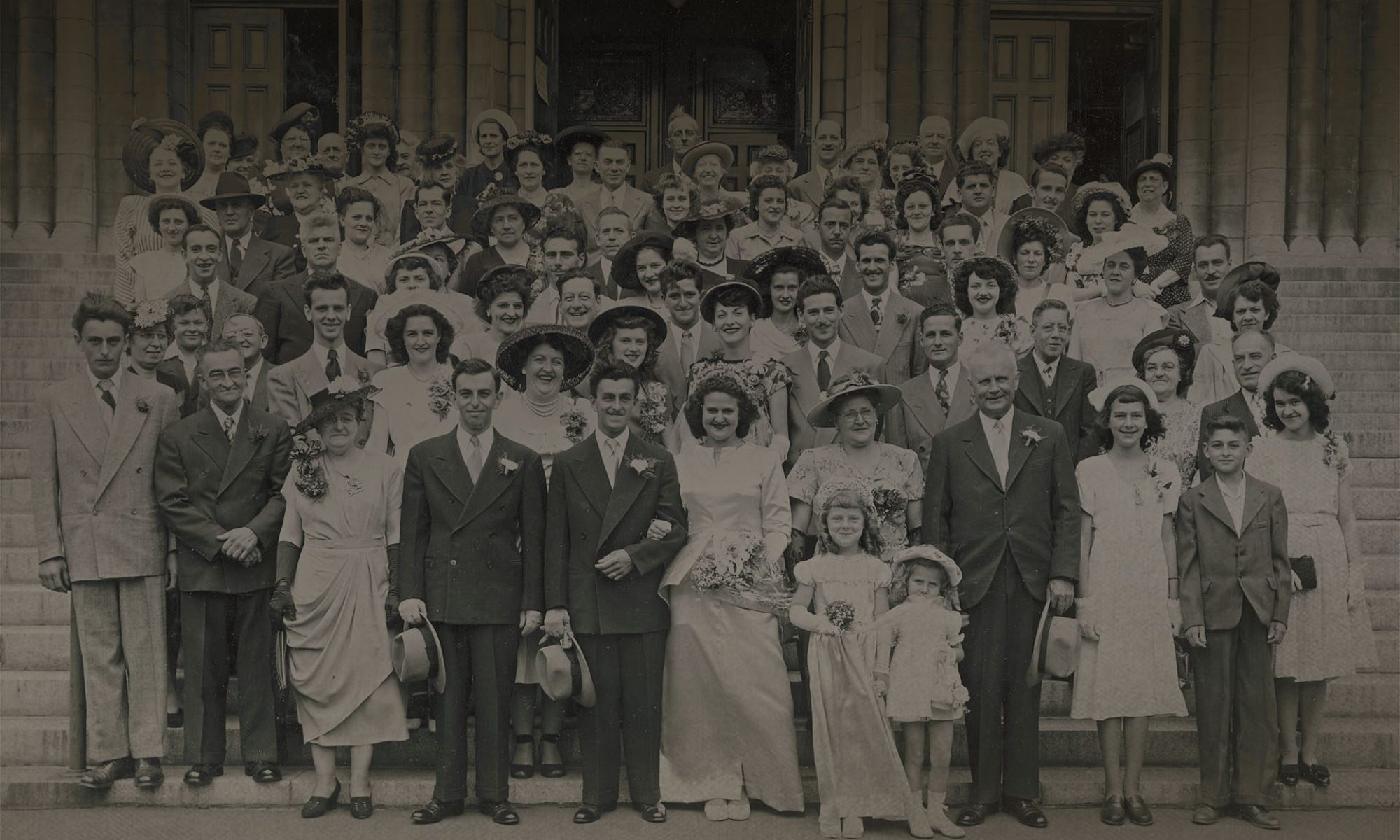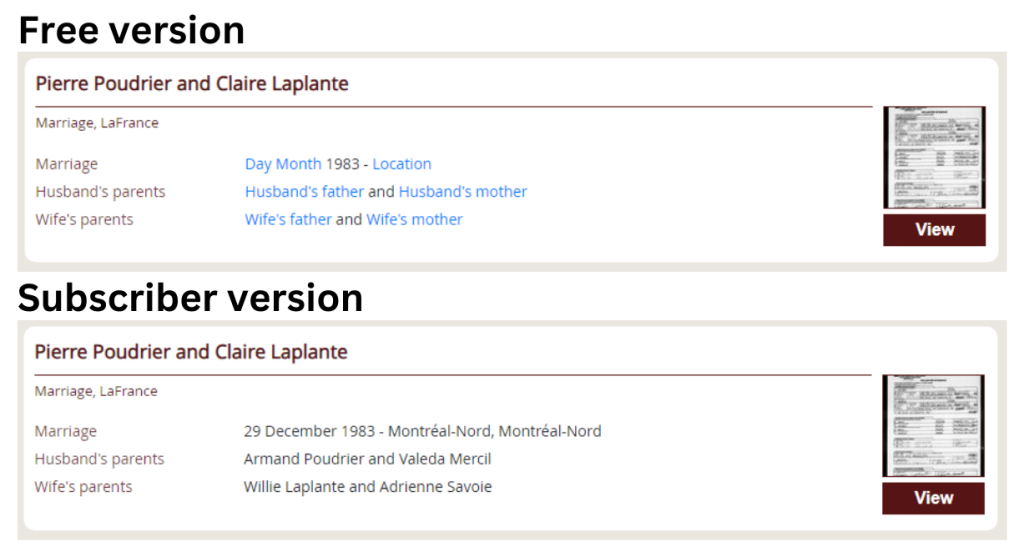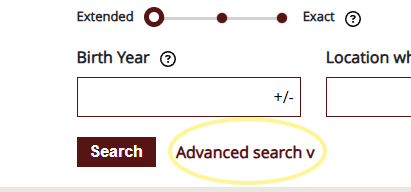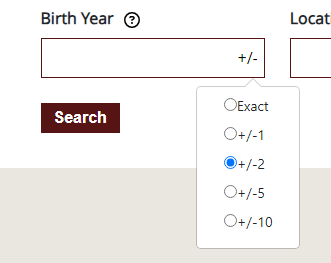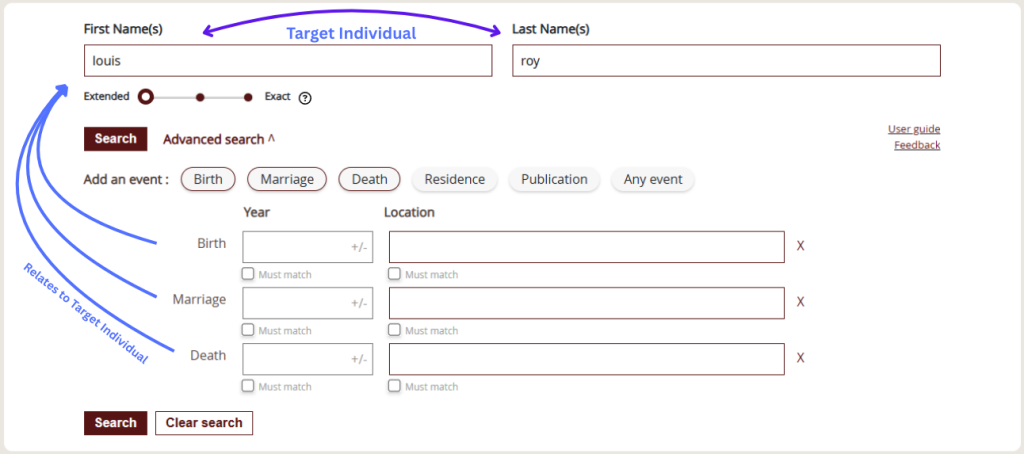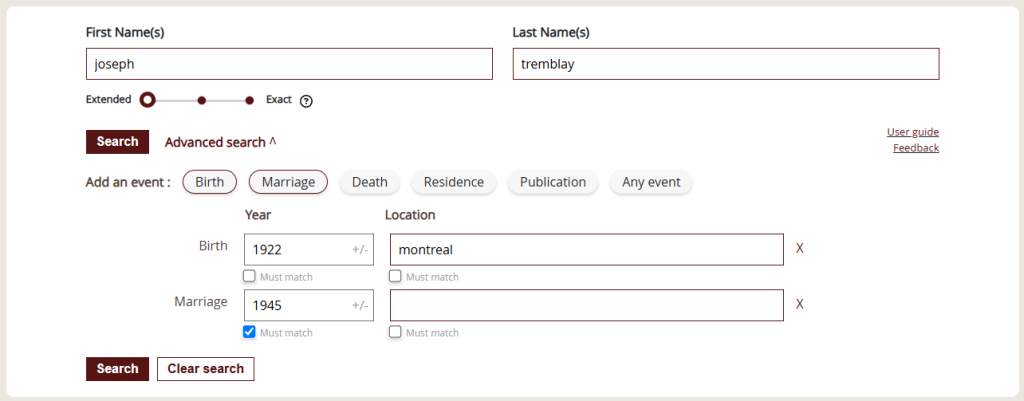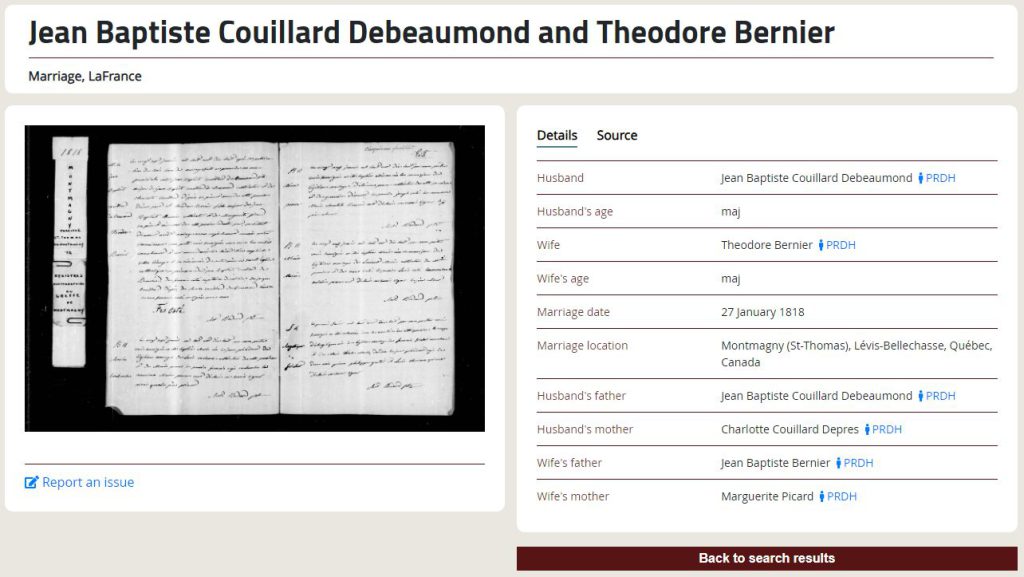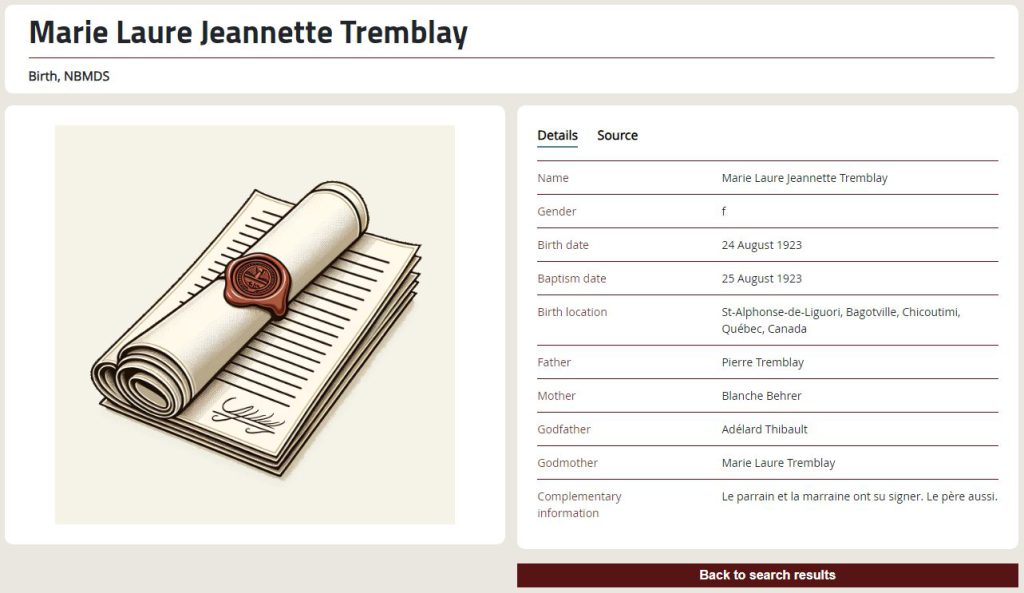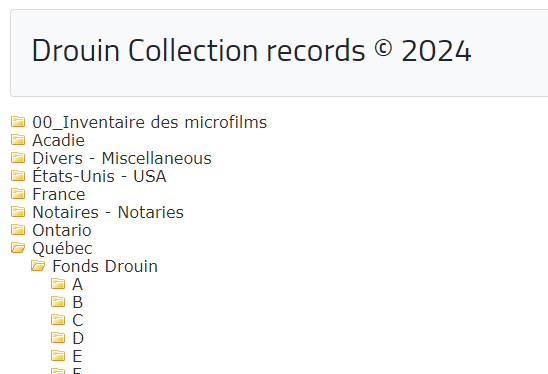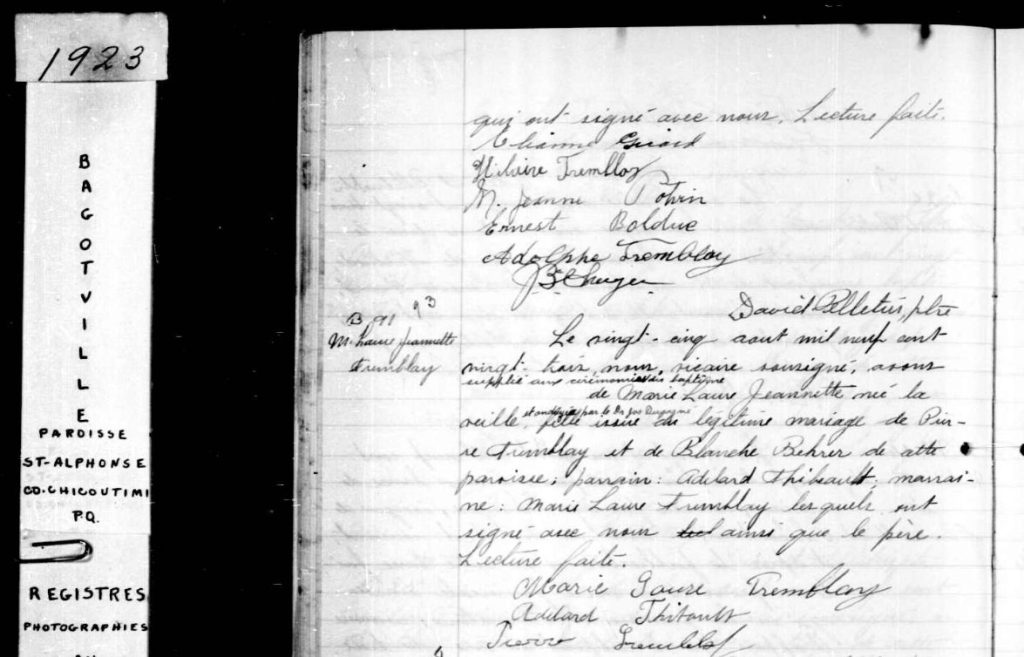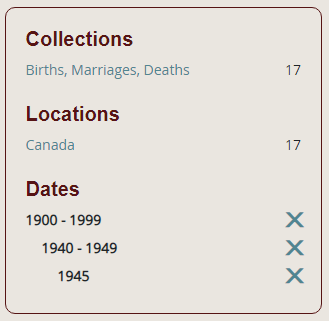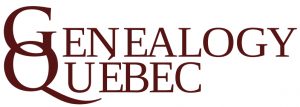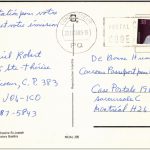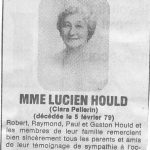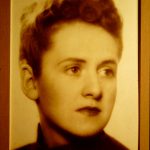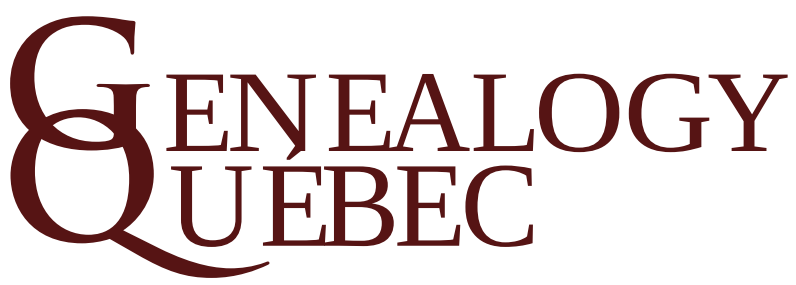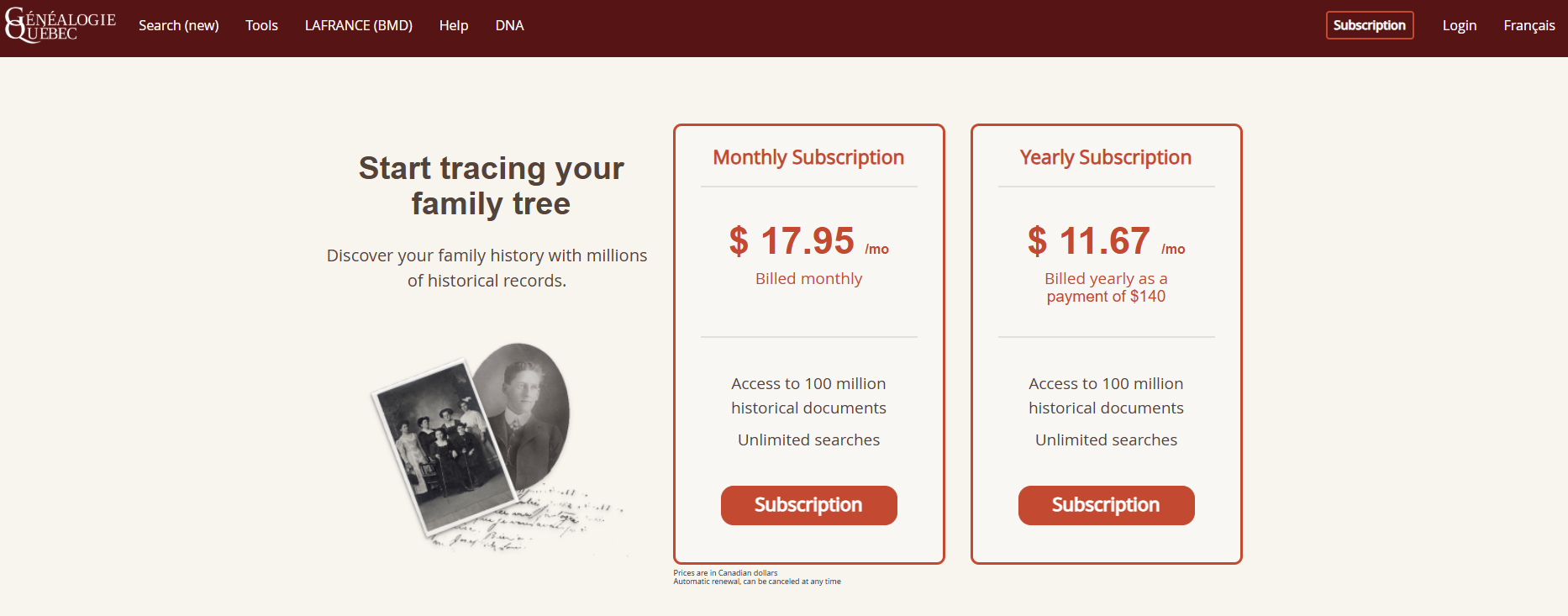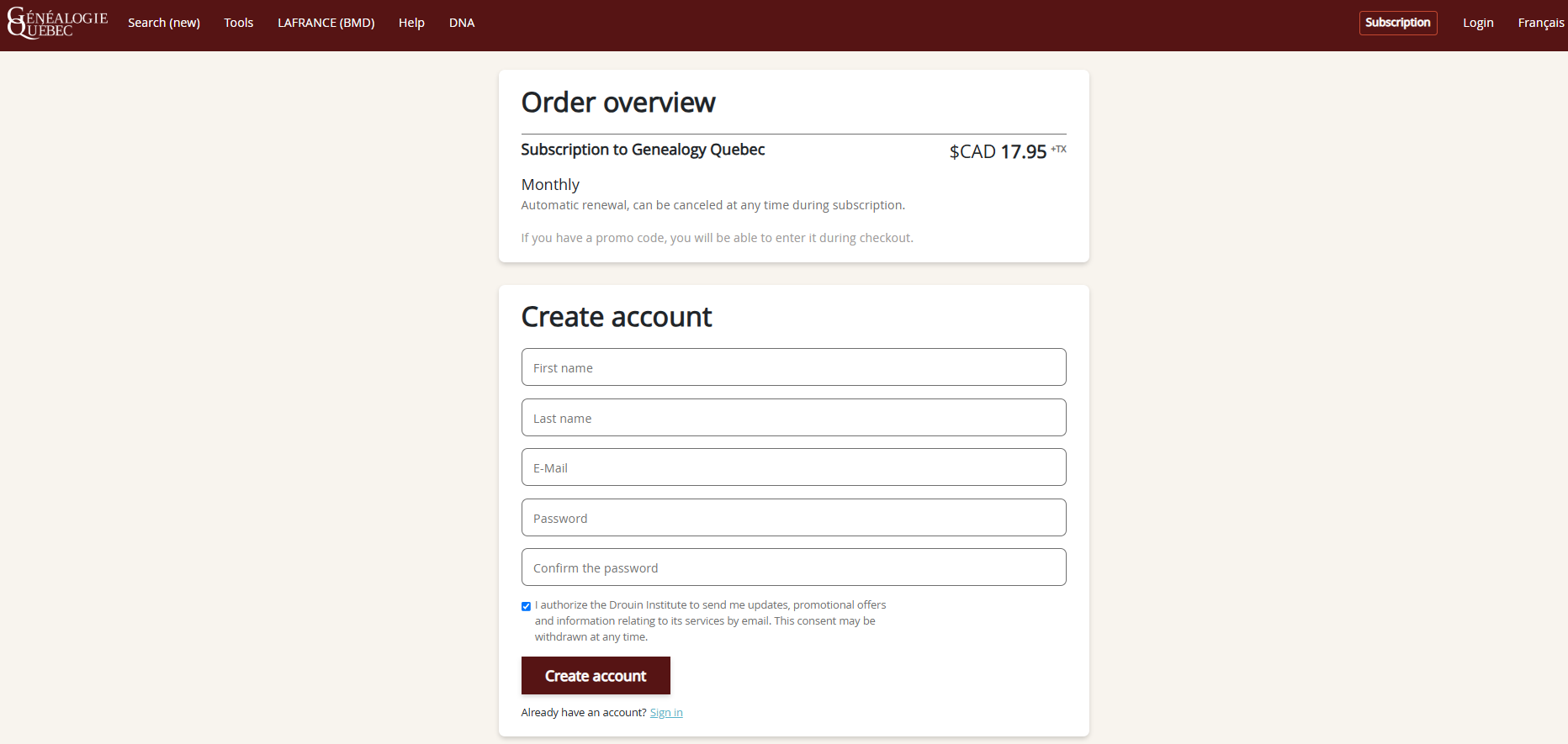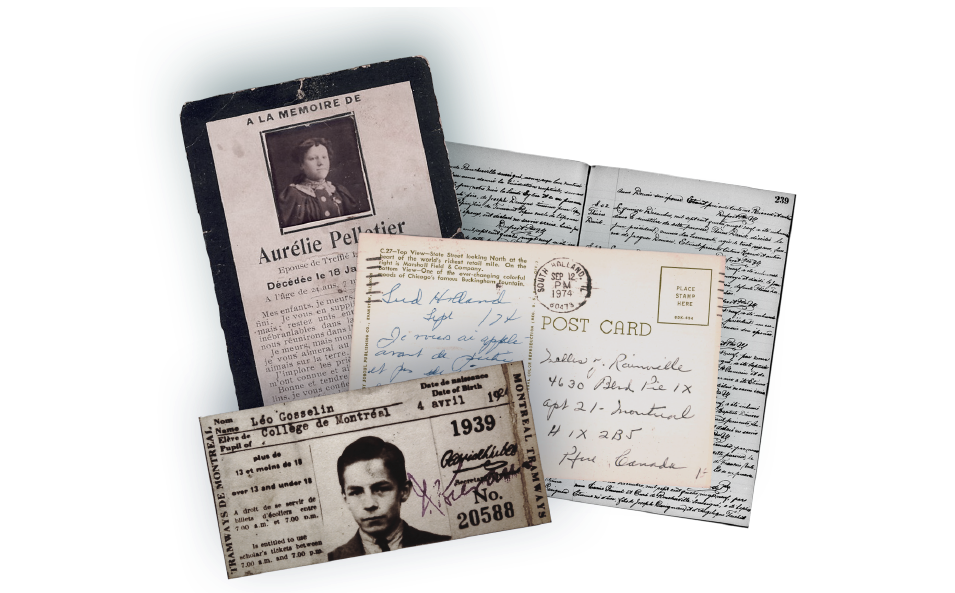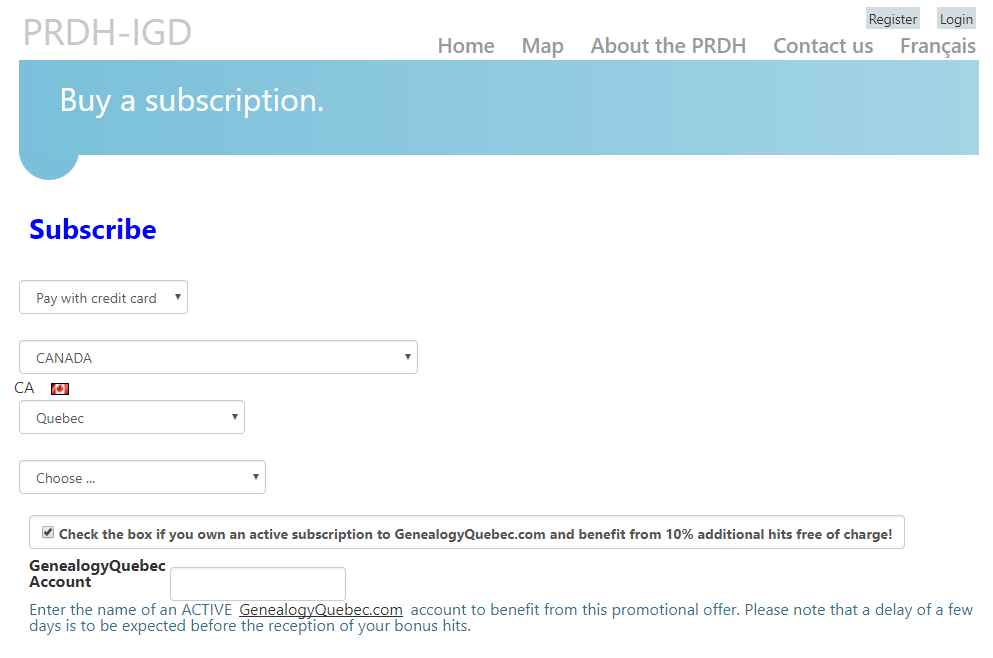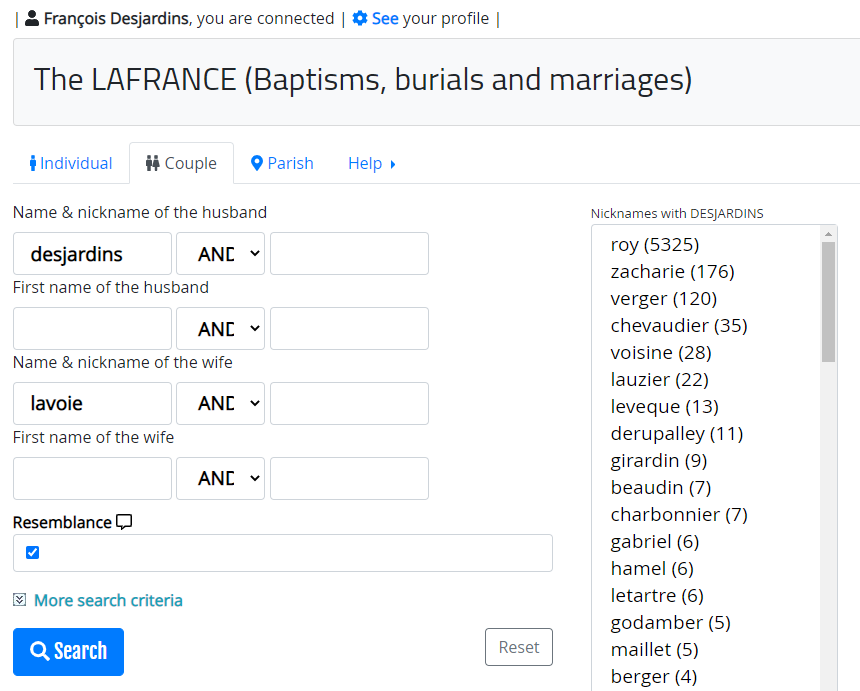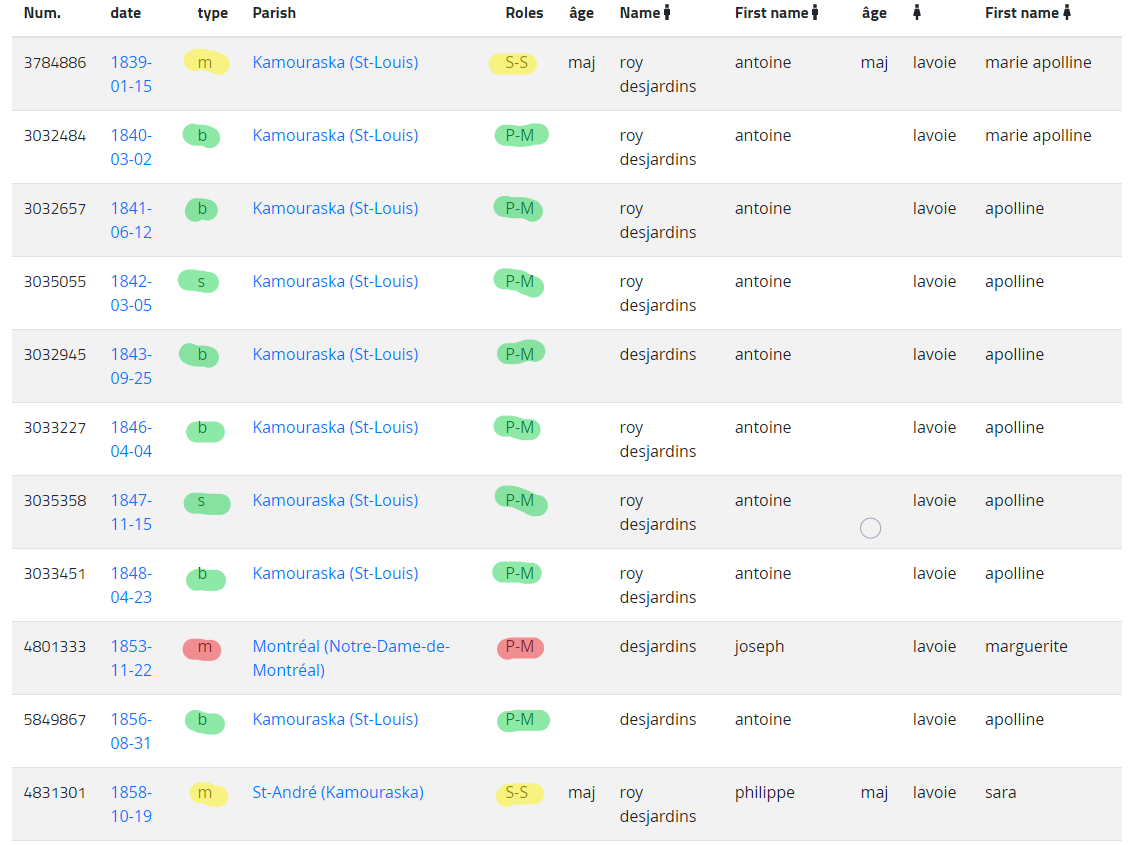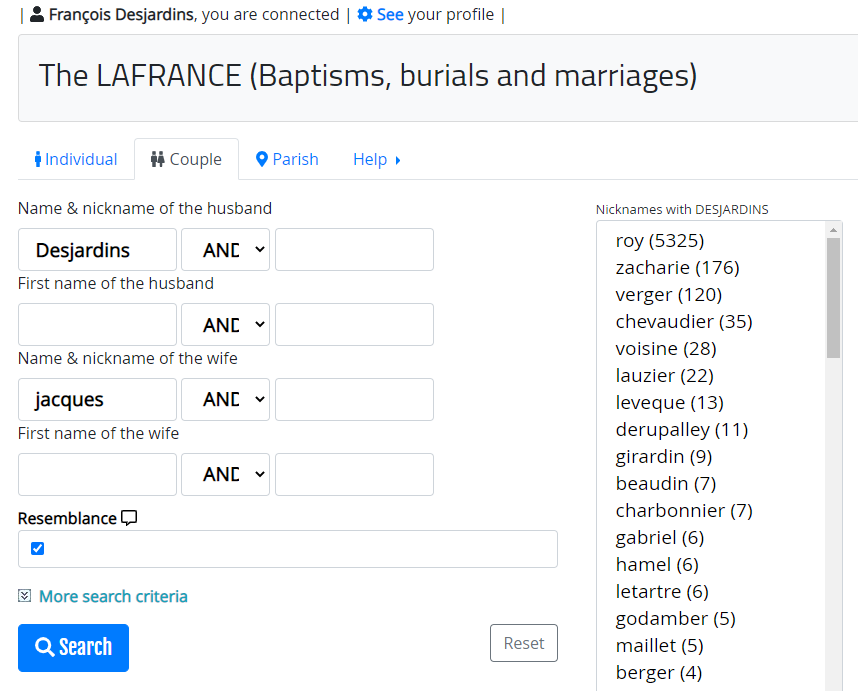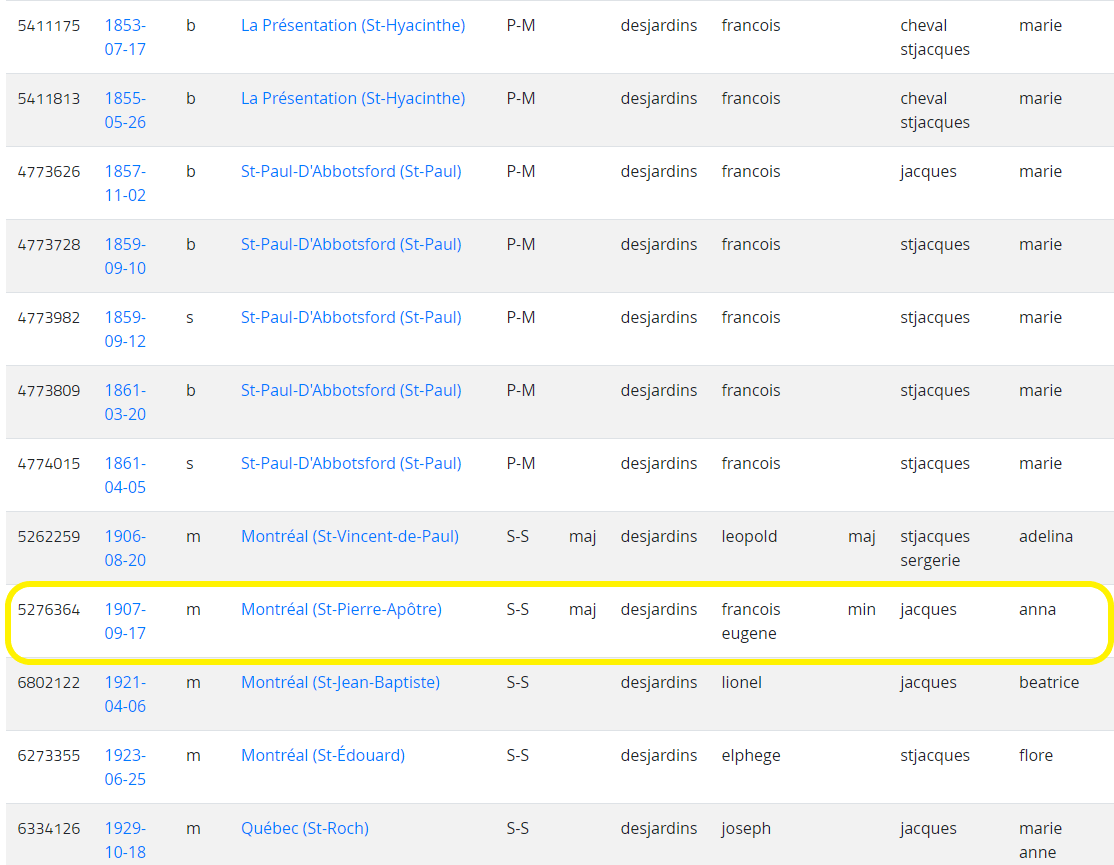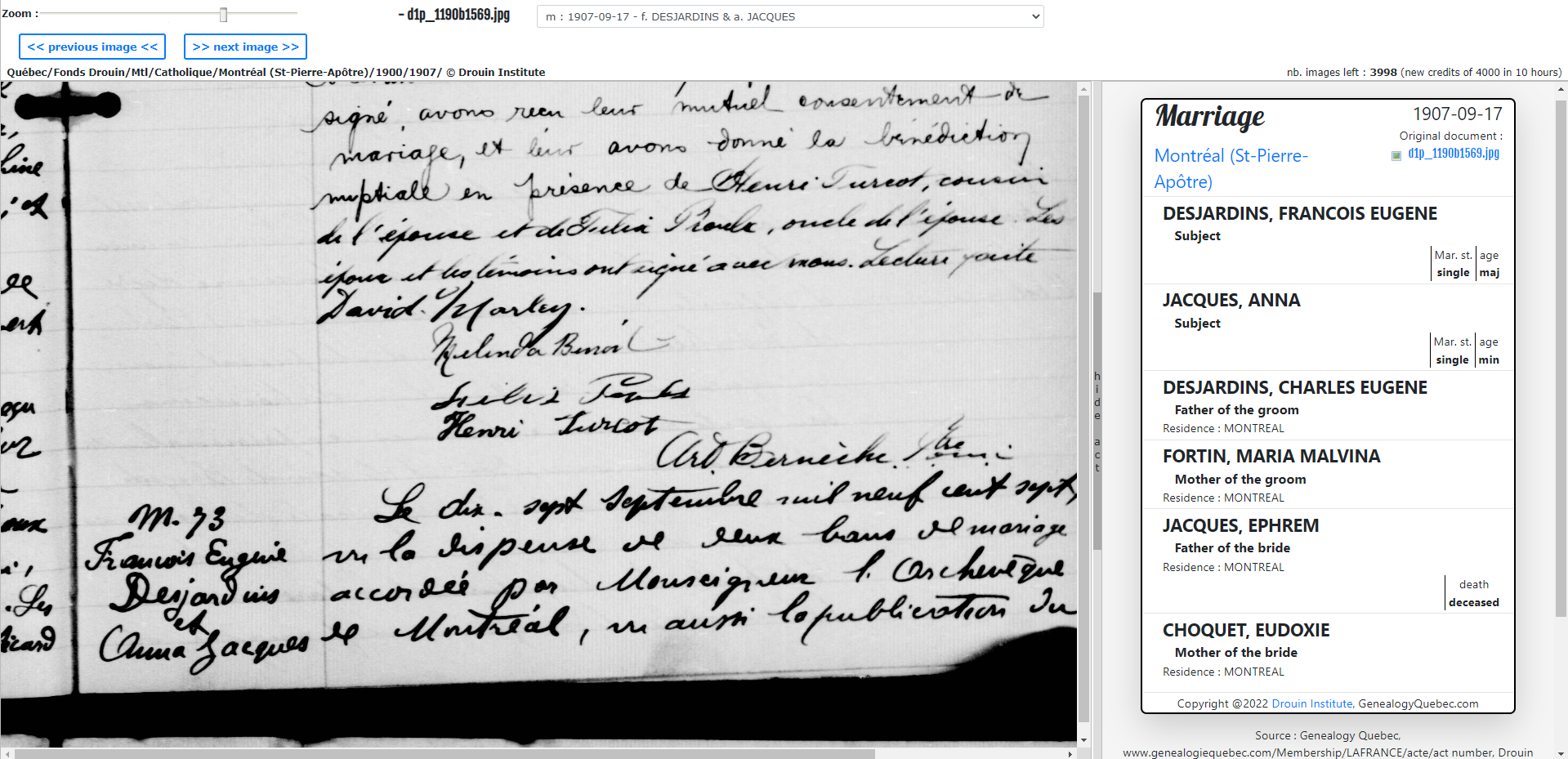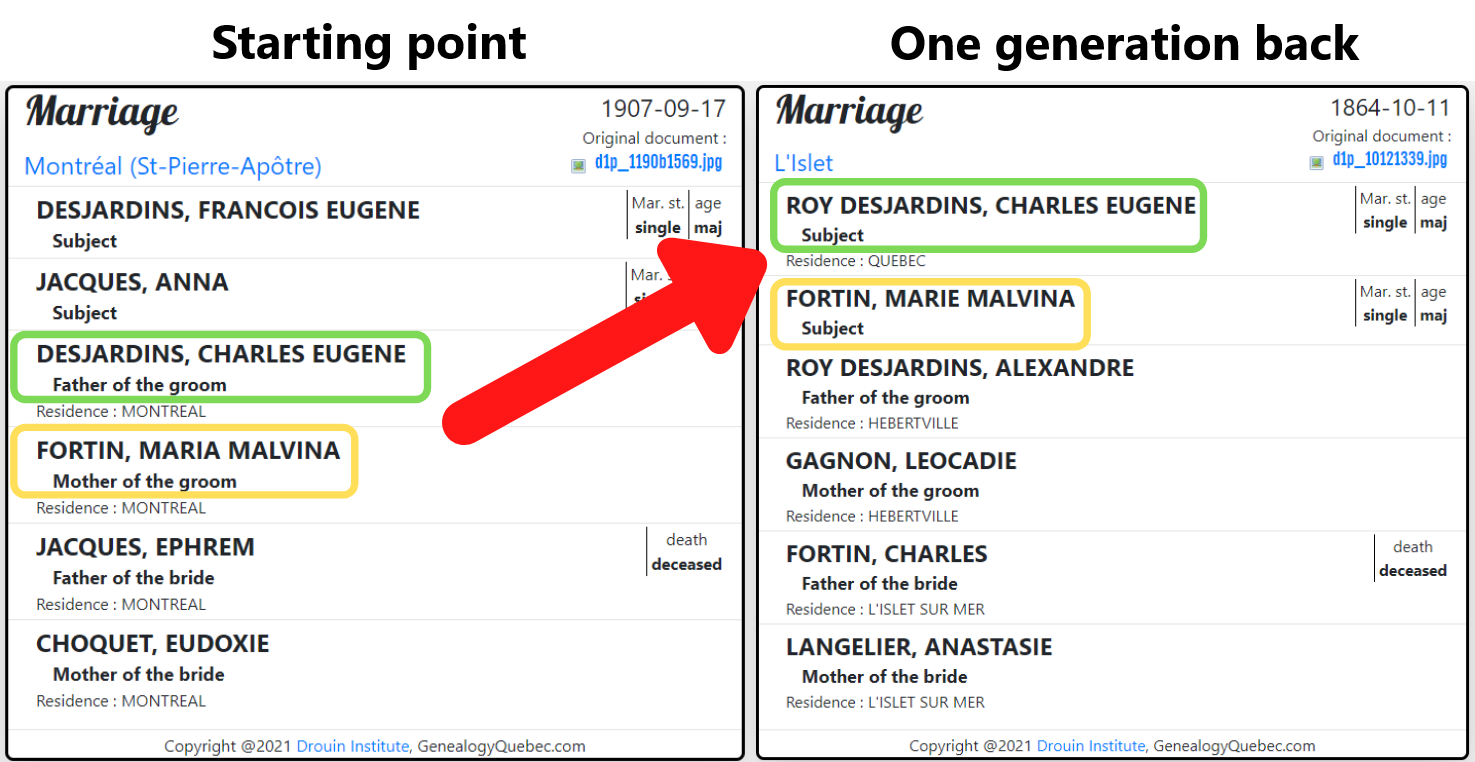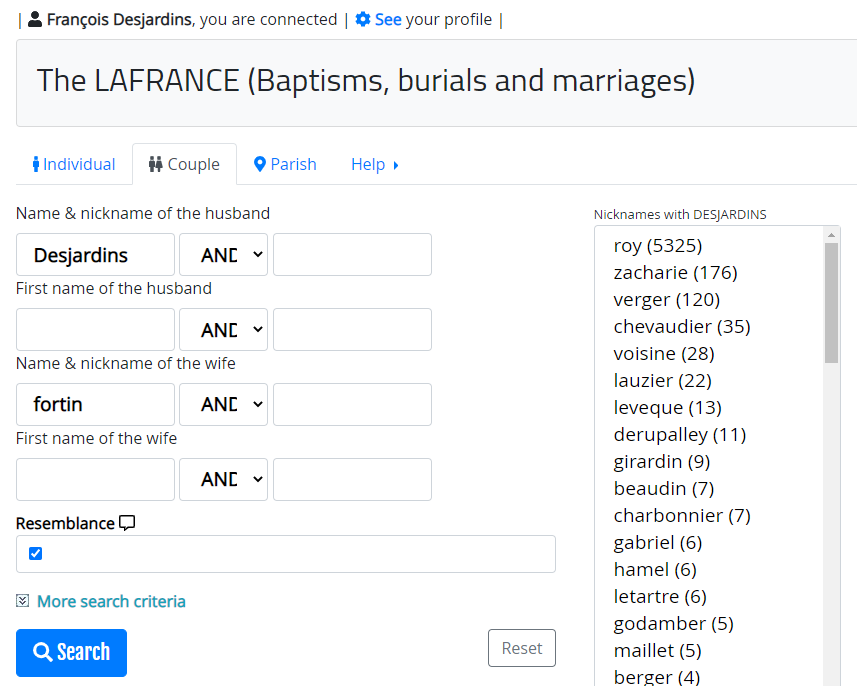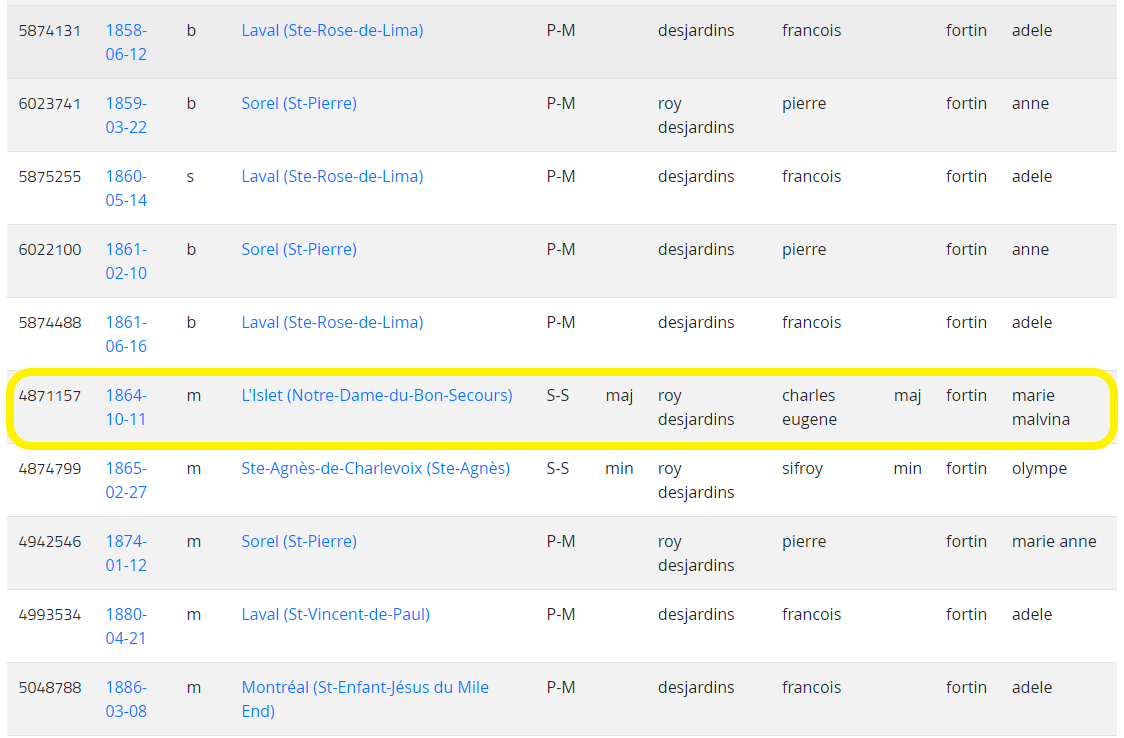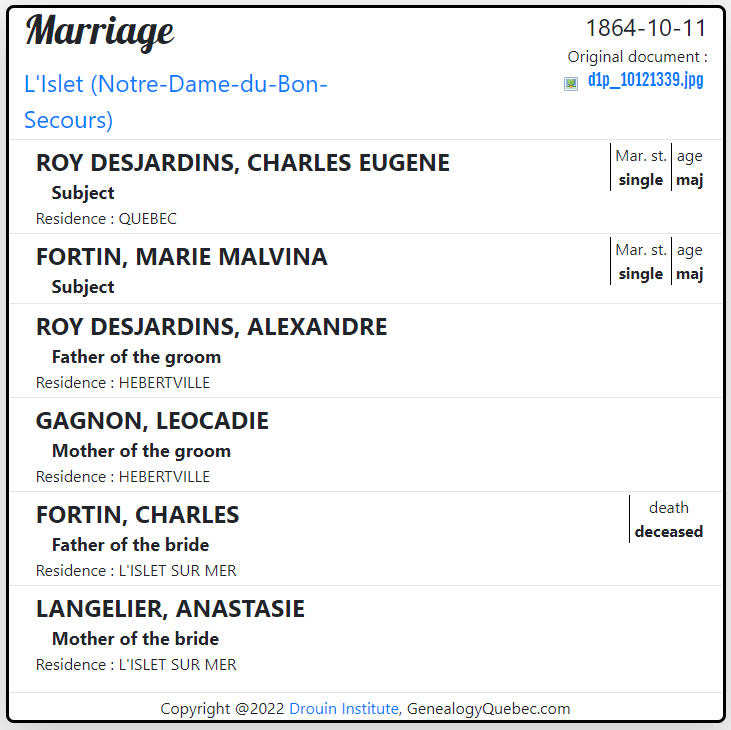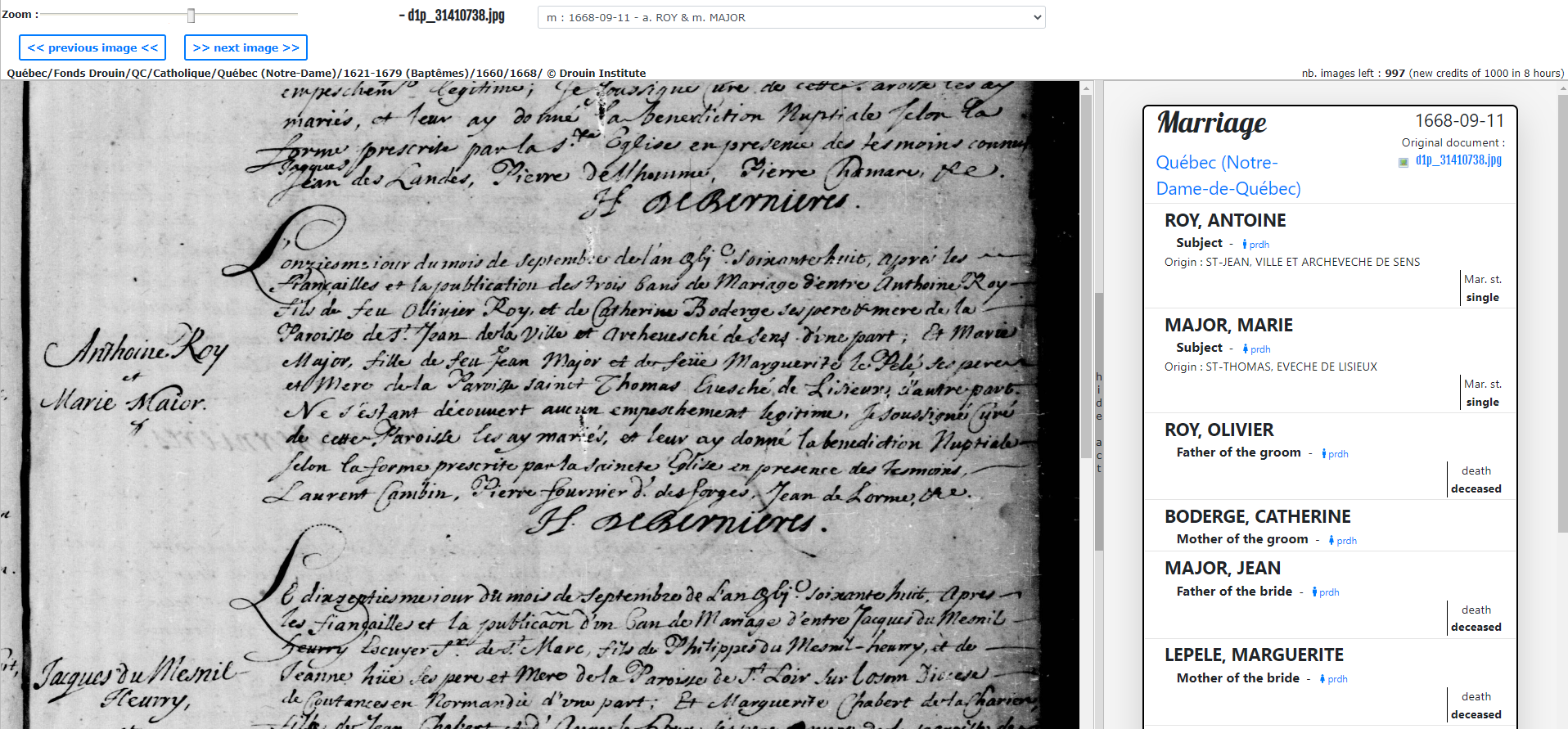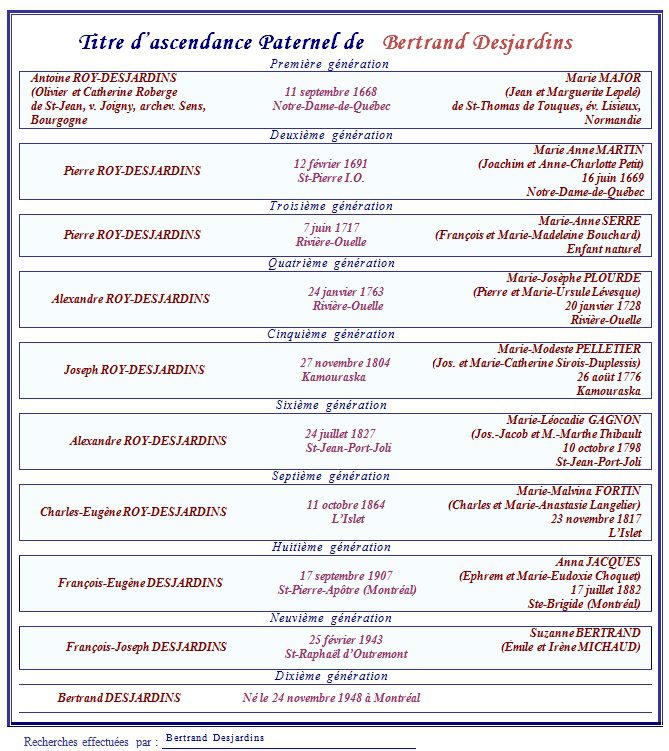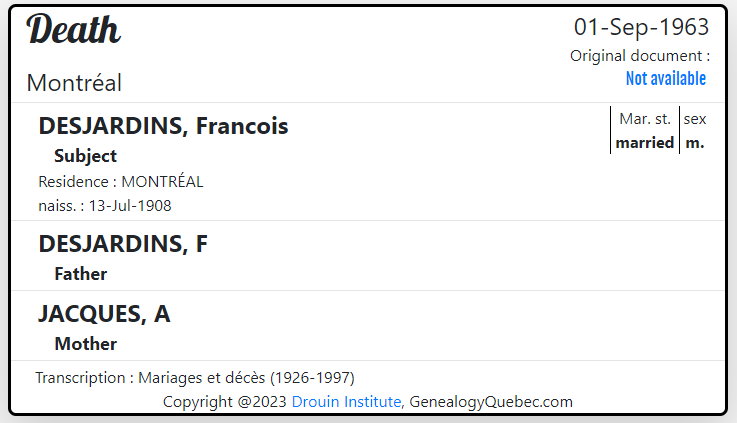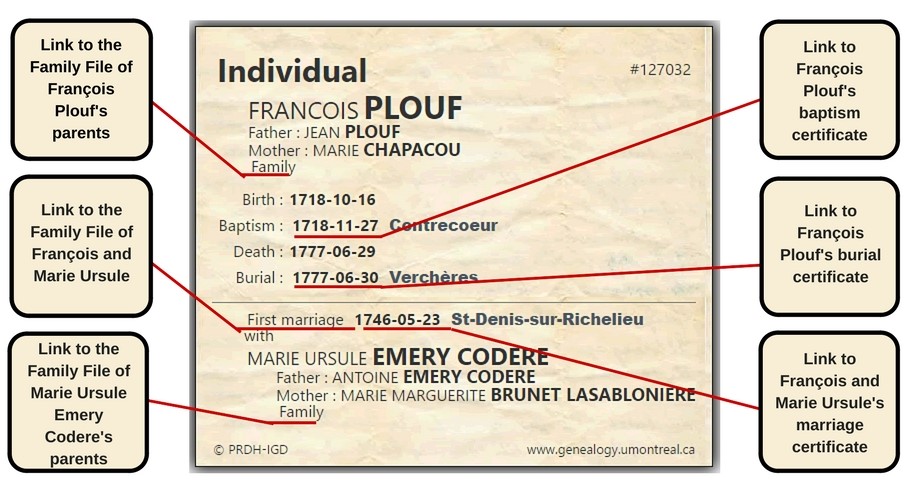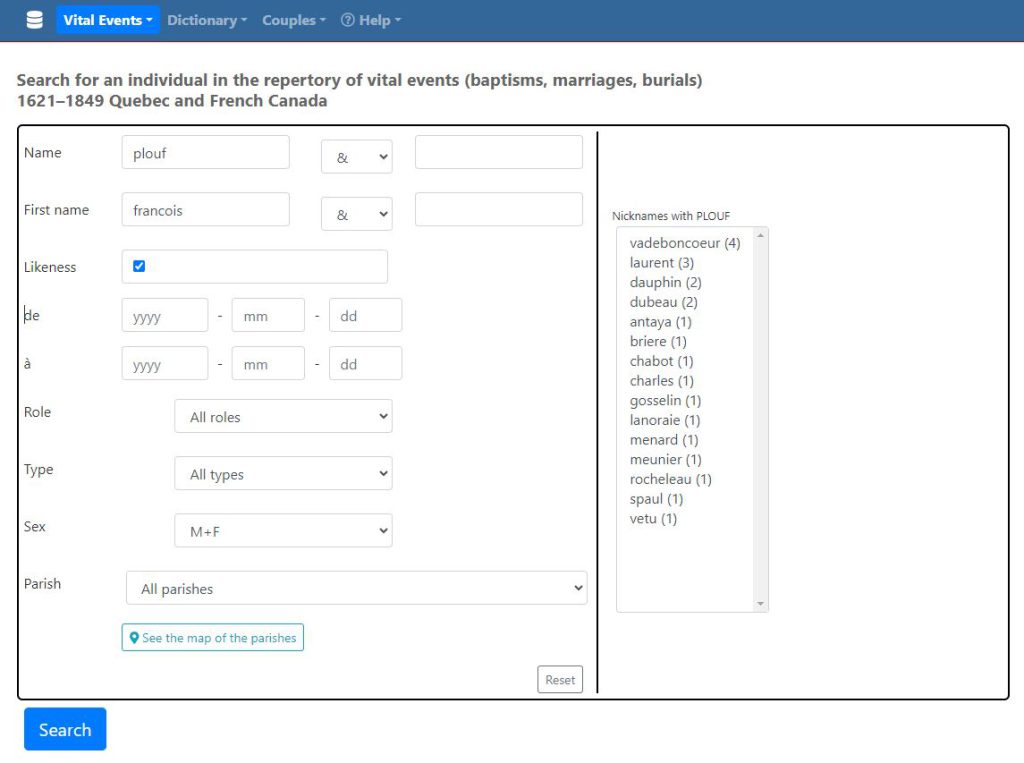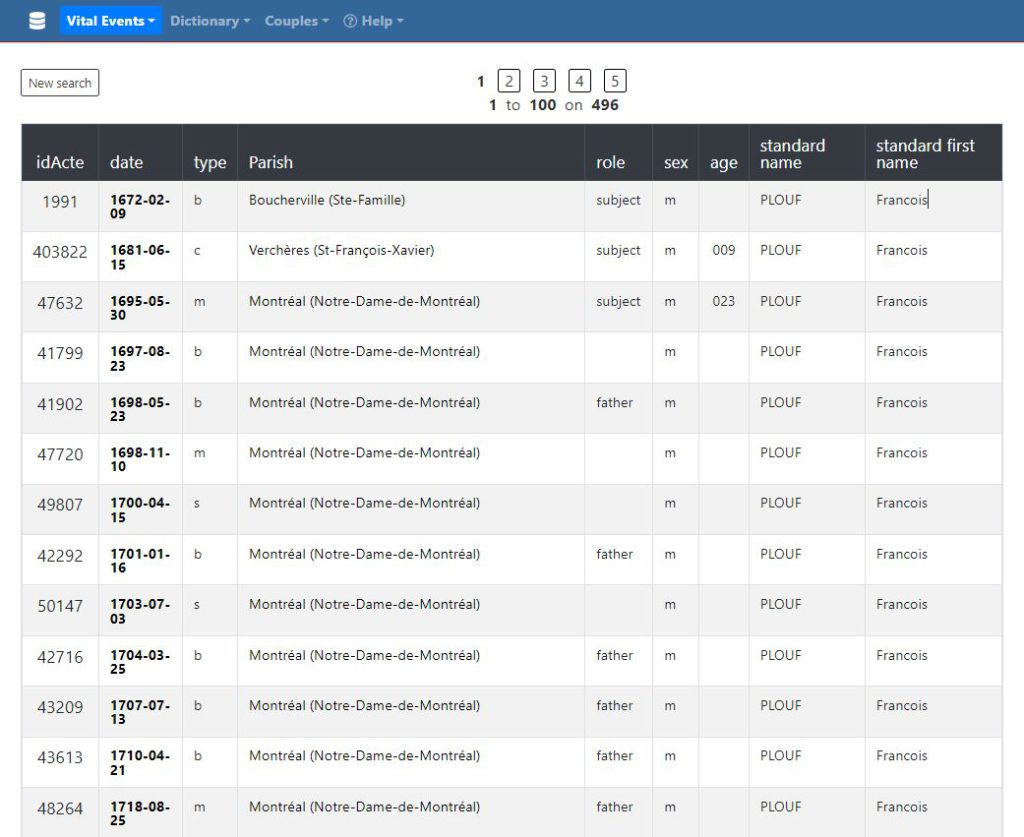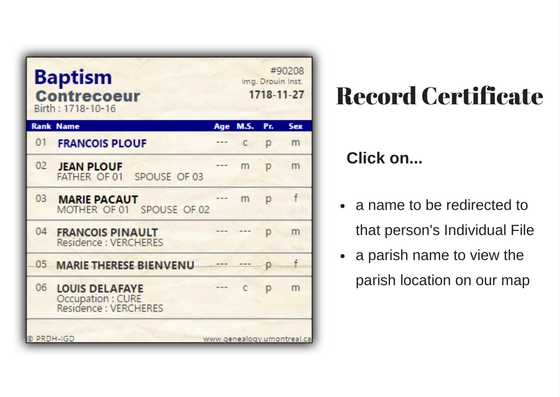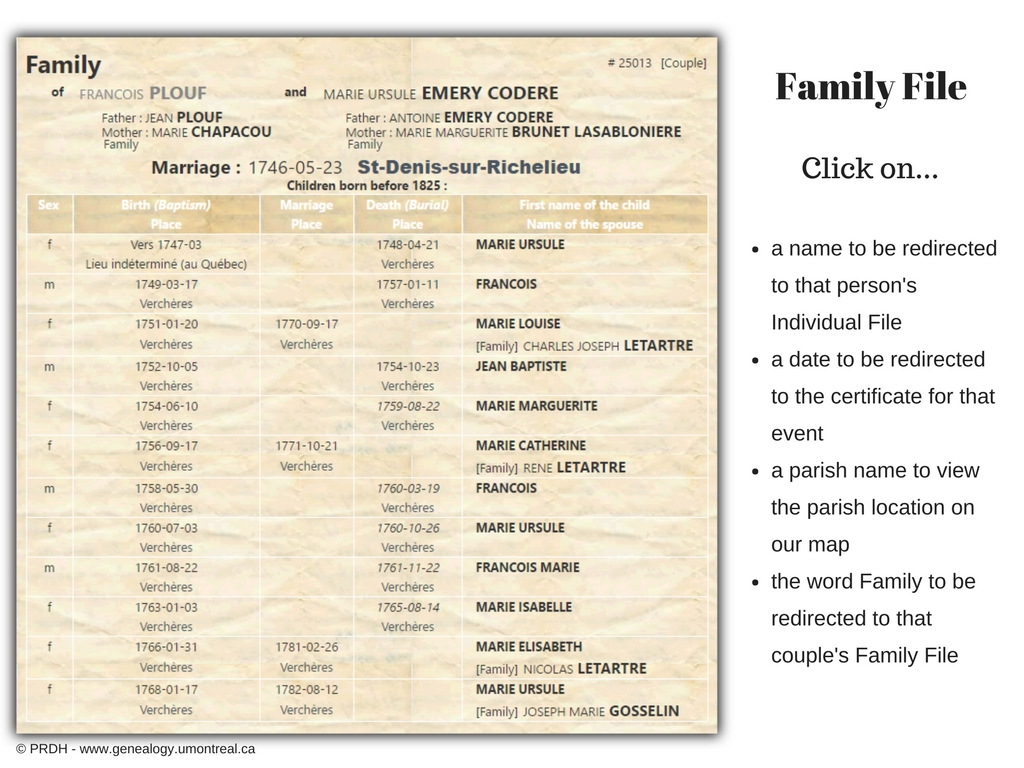
Births, marriages and deaths
ABCD Couples
ABCD Miscellaneous
ABCD Individuals
ABCD Births, ABCD Marriages, ABCD Deaths
Acadia – Families
Drouin Great Collections
LaFrance Births, LaFrance Marriages, LaFrance Deaths
NBMDS Births, NBMDS Marriages, NBMDS Deaths
Drouin Collection Records
BMD Cards
Obituaries, Headstones and Memorial cards
Internet Obituaries
Newspaper Obituaries
Memorial Cards
Groupe Nécro – Headstones
Census
Ontario 1881. Québec 1881 and 1901 Censuses
Notarized Documents, Land Records and Court Records
Notarized Documents
Pictures, Cards and Postcards
Postcards
Phonebooks, City Directories, School Yearbooks
ABCD Directories
City Directories
Miscellaneous
Drouin Miscellaneous Collections
ABCD Couples
This database contains files based on couples. The files list various pieces of information relating to the couple, such as dates and places of birth, marriage and death, and the names of the individuals’ parents and previous spouses.
This information comes from the research of numerous genealogists who have shared their data with the Drouin Institute. It is important to verify the content of these files by referring to the primary sources associated with the events and individuals listed.

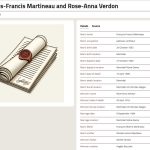
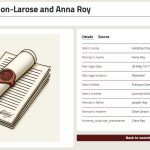
Number of documents
4,189,539 couple files
Period covered
Late 16th century to present day
Regions covered
Mainly Quebec, but also a small part of Ontario, the United States, and France
Source quality – ★★★
Information gathered from various sources, source documents not available
Accessing the collection
This collection is available through the website’s search engine.
ABCD Miscellaneous
ABCD Miscellaneous is a database based on individuals and couples, containing information of all kinds. This information comes from source documents such as birth, marriage and death certificates, censuses, city directories, as well as Jean-Pierre Pepin’s personal research.

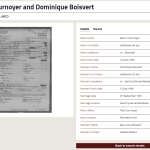
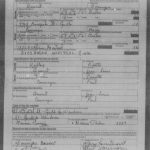
Number of documents
35,244 files
Period covered
From the 17th century to the present day
Regions covered
Mainly Quebec
Source quality – ★★★★
Information gathered from various sources, but generally taken from primary documents, source documents sometimes available
Accessing the collection
This collection is available through the website’s search engine.
ABCD Individuals
This database contains files based on individuals. The files in this collection list various pieces of information relating to the individual, such as dates and places of birth and death, and the names of the individual’s parents.
This information comes from the research of numerous genealogists who have shared their data with the Drouin Institute. It is important to verify the content of these records by referring to the primary sources associated with the events and individuals listed.
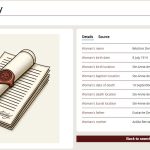
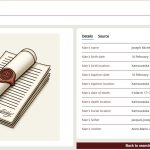
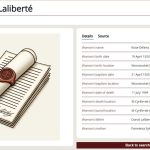
Number of documents
1,582,418 files
Period covered
Late 16th century to present day
Regions covered
Mainly Quebec, but also a small part of Ontario, the United States, and France
Source quality – ★★★
Information gathered from various sources, source documents not available
Accessing the collection
This collection is available through the website’s search engine.
ABCD Births, ABCD Marriages et ABCD Deaths
The ABCD Births, Marriages and Deaths databases contain transcriptions of Quebec church and civil records. These are direct transcriptions from the original documents.
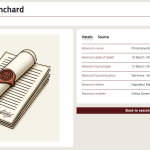
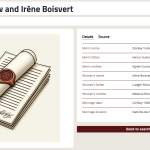
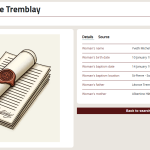
Number of documents
Births – 1,538,509 files
Marriages – 2,618,611 files
Deaths – 681,737 files
Period covered
Early 17th century to present day
Regions covered
Mainly Quebec
Source quality – ★★★★
Direct transcriptions of original documents, source documents not available
Accessing the collection
This collection is available through the website’s search engine.
Acadia – Families
The Acadia – Families database contains files reconstructing Acadian families using parish records.
The files generally contain the parents and one of their children, dates of birth, marriage and death for one or more of the individuals listed, as well as other complementary information. A link to the original source document(s) is often available.
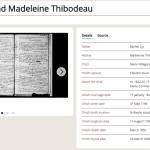
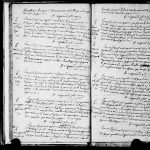
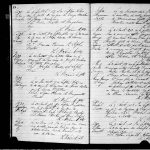
Number of documents
180,690 files
Period covered
17th to 20th century
Regions covered
Acadia
Source quality – ★★★★★
Direct transcriptions of original documents with additional information, source documents often available
Accessing the collection
This collection is available through the website’s search engine.
Drouin Great Collections
The Drouin Great Collections database contains a digitized version of the Great Collections published and edited by the Drouin Institute over the course of its existence. They include the following:
- La Masculine (Men Series): Alphabetical index of marriages of French-Canadian families from 1760 to 1935, classified by the man’s surname.
- La Féminine (Woman Series): Alphabetical list of French-Canadian family marriages from 1760 to 1935, sorted by the woman’s surname.
- Le Fichier Histor: A collection of marriage records, including the origin of the individuals and a marriage contract. This collection includes all Catholic and Protestant marriages celebrated in Quebec from 1730 to 1825, as well as marriages celebrated in western French forts such as Detroit, and Acadian marriages.
- Les Fiches Acadiennes: This series contains over 50,000 files of Acadian births, marriages and deaths.
- Dossiers généalogiques Drouin: Contains first-hand data collected before 1960 by Joseph and Gabriel Drouin to constitute the sum of family genealogies.
- Petit Drouin: Directory of Catholic marriages in Quebec from 1760 to 1825.
As well as the following collections: Dossiers généalogiques Drouin, Affinités généalogiques Drouin, and Petit Drouin.
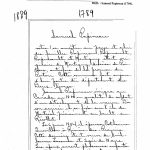
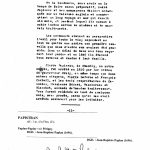
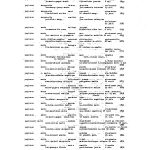
Number of documents
293,402 files and images
Period covered
17th to 20th century
Regions covered
Quebec and Acadia
Source quality – ★★★★
Direct and indirect transcriptions of original documents and additional information
Accessing the collection
This collection is available through the website’s search engine.
LaFrance Births, LaFrance Marriages, LaFrance Deaths
The LaFrance is a database of birth, marriage and death records from Quebec, Ontario, Acadia and the United States, covering from the arrival of the first settlers in North America to the present day.
The collection includes an index to the Drouin Collection (parish registers for Quebec and Ontario) and the Marriages and Deaths 1926-1997 collection (marriage and death forms registered by the Quebec government during the 20th century). The original document is often available for consultation.
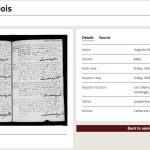
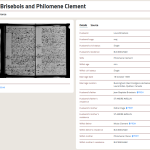
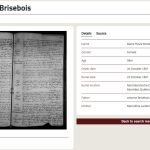
Number of documents
Births – 2,050,017 records, 2,040,373 images
Marriages – 5,158,145 records, 3,438,555 images
Deaths – 3,752,127 records, 942,334 images
Period covered
17th to 21st century
Regions covered
Quebec, Eastern Ontario, Northeastern U.S. and Acadia
Source quality – ★★★★★
Direct transcriptions of original documents, source documents often available
Accessing the collection
This collection is available through the website’s search engine.
NBMDS Births, NBMDS Marriages, NBMDS Deaths
The NBMDS collection contains millions of births, marriages and deaths from a variety of sources, mainly parish and civil registers. These documents cover mainly Quebec, but also parts of the rest of Canada and the United States. The source document is sometimes available.
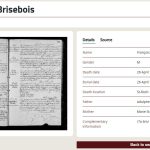
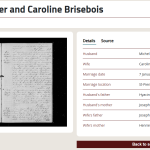
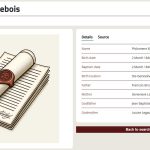
Number of documents
Births – 3,129,829 records, 420,715 images
Marriages – 2,108,160 records, 78,256 images
Deaths – 1,488,097 records, 260,485 images
Period covered
17th to 21st century
Regions covered
Quebec, Northeastern U.S. and Ontario
Source quality – ★★★★
Direct transcriptions of original documents, source documents sometimes available
Accessing the collection
This collection is available through the website’s search engine.
Drouin Collection Records
The Drouin Collection Records is a collection of images of parish registers (baptisms, burials and marriages) as well as of other documents of historical and genealogical significance. It covers multiple North American regions.
This massive collection contains the entirety of Quebec’s civil registry from 1621 to the 1940s, which encompasses the vast majority of individuals who lived in the province during that period, making it an invaluable tool for genealogical research in the province.
You will find more information at this address.
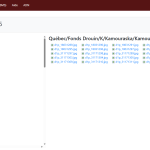
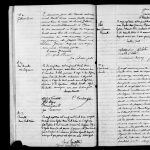
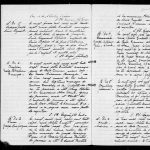
Number of documents
5,370,628 parish registre images
Period covered
17th to 21st century
Regions covered
Quebec, Northeastern U.S., Acadia, New Brunswick, France and Ontario
Source quality – ★★★★★
High quality digitization of original documents
Accessing the collection
The collection can be consulted via a folder tree at this address. Registers are sorted by collection, location and year.
BMD Cards (Baptisms, Marriages, Burials)
The BMD Cards collection is a repository of baptism, marriage and burial cards from Quebec, Ontario and the United States.
This tool contains the Antonin Loiselle, Kardex and Fabien fonds, as well as Ontario BMD cards, BMD cards sorted by cities and families, adoption cards, and death cards sorted by family name, provided by the Quebec Family History Society.
More information is available at this address.
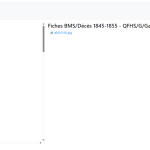
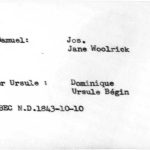
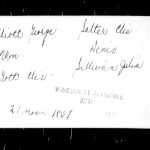
Number of documents
3,000,000 BMD cards
Period covered
17th to 21st century
Regions covered
Quebec, Northeastern U.S. and Ontario
Source quality – ★★★★
Digitized cards made using the original church registers
Accessing the collection
The collection can be consulted via a folder tree at this address. Cards are sorted by collection and alphabetical order.
Internet Obituaries
This collection contains obituaries published online by various Canadian funeral homes and newspapers. These notices come from across Canada and date from 1999 to the present. The index contains the name of the deceased, the date of death and the date of publication, as well as the full text of the obituary. A photo of the deceased is also often available. The collection is updated once or twice a year, to include obituaries from recent months.
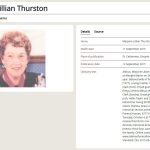
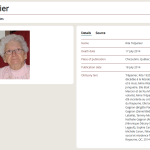
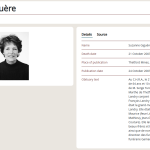
Number of documents
3,000,000 obituaries, 1,980,000 images
Period covered
1999 to today
Regions covered
All of Canada
Source quality – ★★★★★
Information and complete original text, plus photo of deceased when available
Accessing the collection
This collection is available through the website’s search engine.
Newspaper Obituaries
This collection contains obituaries published in Quebec and Ontario newspapers. An image of the original obituary is available in all cases.
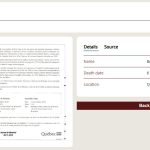
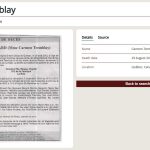
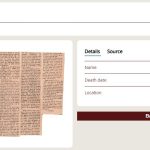
Number of documents
1,460,000 obituaries and images
Period covered
From the 18th century to the present day, but mainly from the 20th century
Regions covered
Mainly Quebec and Ontario, but also the rest of Canada and the US
Source quality – ★★★★★
Index and original document available in all cases
Accessing the collection
This collection is available through the website’s search engine.
Memorial Cards
This collection contains memorial cards. An index and an image of the card are available.
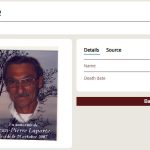
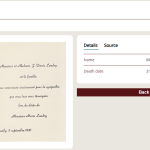
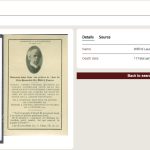
Number of documents
99,699 cards and images
Period covered
Mid-19th century to present day
Regions covered
Mainly Quebec
Source quality – ★★★★★
Index and original document available in all cases
Accessing the collection
This collection is available through the website’s search engine.
Groupe-Nécro – Headstones
This collection contains indexed tombstone photos from over 830 cemeteries in Quebec and Ontario. A photo of the tombstone is available in all cases.
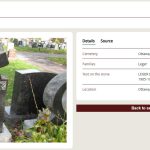
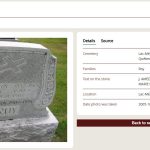
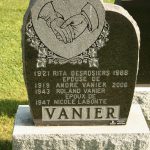
Number of documents
739,343 headstones and images
Period covered
Mid-19th century to present day
Regions covered
Quebec and Ontario
Source quality – ★★★★★
Transcription and photo of the stone available in all cases
Accessing the collection
This collection is available through the website’s search engine.
Ontario 1881, Québec 1881 and 1901 censuses
The Ontario 1881, Québec 1881 and 1901 censuses collections contain a detailed index to these censuses. It contains the following information:
- Last name
- First name
- Sex
- Marital status
- District
- Subdistrict
- Age
- Place of birth
- Occupation
- Religion
- Language
The original document is not available for consultation.
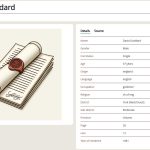
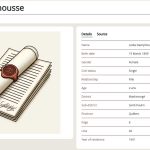
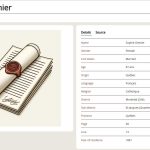
Number of documents
Quebec 1881 – 1,358,566 records
Quebec 1901 – 1,730,150 records
Ontario 1881 – 1,924,191 records
Period covered
Quebec – 1881 and 1901
Ontario – 1881
Regions covered
Quebec and Ontario
Source quality – ★★★★
Census transcriptions. Original document not available.
Accessing the collection
This collection is available through the website’s search engine.
Notarized documents
The Notarized documents collection contains tens of thousands of notarial contracts indexed by type of document, names cited, name of notary, as well as dates and places mentioned in the contract. These documents come mainly from Quebec and Ontario. The original digitized documents can also be consulted.
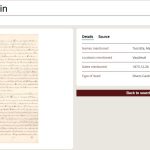
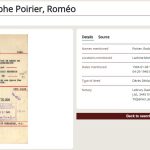
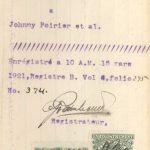
Number of documents
82,795 contracts, 255,490 images
Period covered
1800 to 1980
Regions covered
Quebec and Ontario
Source quality – ★★★★★
Index of relevant information and full contract scan available.
Accessing the collection
This collection is available through the website’s search engine.
Postcards
This collection contains postcards sent or received in Quebec and surrounding areas. They are indexed by name of sender and/or recipient. An image of the front and back of the card is available.
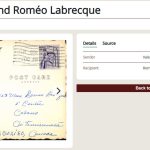
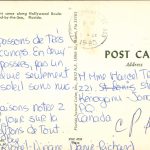

Number of documents
256,574 cards and images
Period covered
20th century, mainly from 1960 to 1990
Regions covered
Québec and surrounding areas
Source quality – ★★★★★
Sender and/or recipient index, photos of front and back of card available
Accessing the collection
This collection is available through the website’s search engine.
ABCD Directories
ABCD Directories is an individual-based database containing information of all kinds. This information comes from source documents such as birth certificates, censuses, city directories, as well as Jean-Pierre Pepin’s personal research.
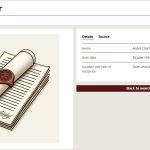
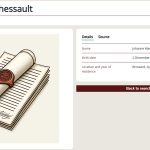
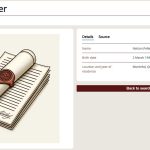
Number of documents
17,000,000 files
Period covered
21st century
Regions covered
Quebec
Source quality – ★★★★★
High-quality and accurate data. Source documents not available.
Accessing the collection
This collection is available through the website’s search engine.
City Directories
The City directories tool contains a digitized copy of the directories of Montreal (Lovell), Laval (Lovell) and Quebec (Marcotte) as well as other municipalities. The directories have been digitized and indexed by year and category.
More information is available at this address.
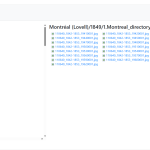
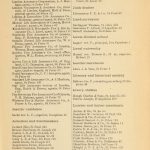
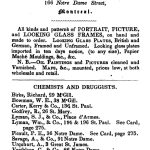
Number of documents
250,000 digitized pages, 40,000,000 individuals listed
Period covered
19th to 21st century
Regions covered
Laval, Montreal, Quebec, Cornwall, St-Jean, Rimouski, Gatineau and Hull (coming soon)
Source quality – ★★★★★
High quality digitization of original city directories
Accessing the collection
The collection can be consulted via a folder tree at this address. Directories are sorted by city and year.
Drouin Miscellaneous Collections
The Drouin Miscellaneous Collections contain a mix of images, documents, books, newspapers, pictures and directories of historical and genealogical significance.
More information is available at this address.
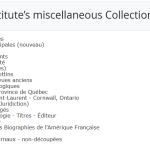
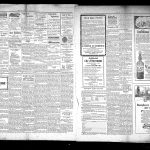

Number of documents
4.6 million images
Period covered
16th to 21st century
Regions covered
Worldwide coverage, focus on Quebec
Source quality – ★★★★
High quality digitization of archival funds, pictures and miscellaneous documents
Accessing the collection
The collection can be consulted via a folder tree at this address. Images are sorted by collection.
